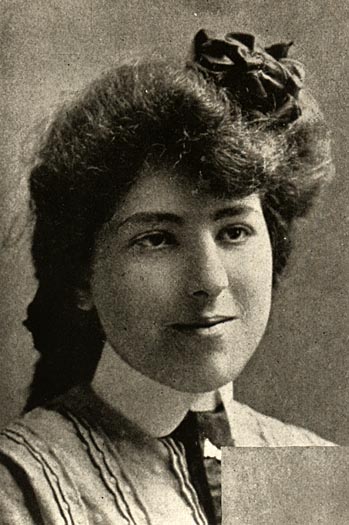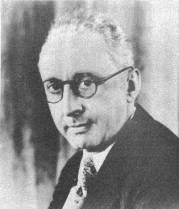 Show Boat's Key Figures in the 1920's
Show Boat's Key Figures in the 1920's
 Edna Ferber: Novelist
Edna Ferber: Novelist
(1885-1968)
Edna Ferber was one of the most popular authors of the 1920's. Prior to writing Show Boat in 1926, she worked as a journalist in the midwest, harboring ambitions to become an actress. While she was in New York writing plays and serial novels for women's magazines, she became a member of the famous Algonquin Club, which initiated her into the high literary culture of the Twenties. In addition to Show Boat, Ferber's most popular novels of the age were So Big, (1924) for which she won the Pulitzer Prize and Cimarron (1929). James Dean, Elisabeth Taylor and Rock Hudson were among the stars to portray some of her later creations, such as in the film version of Ferber's novel Giant in 1952. Before her death in 1968, Edna Ferber was able to realize her childhood dream of becoming an actress, when she played Parthy in a radio production of Show Boat.
 Jerome Kern: Composer
Jerome Kern: Composer
(1885-1945)
Jerome Kern enjoyed a highly successful and productive career in musical theatre. By consistently monitoring the changes in the art form, he was able to play a key role in the development of the modern musical. Kern studied both in Heidelberg, Germany and in London, England, which allowed him to incorporate his study of the European operetta into the shows he would create in the United States. Although Show Boat is arguably is most famous composition, he wrote over 700 songs during his career. In the 1920's alone he wrote the music for twelve musical productions. These were The Night Boat (1920), Hitch-Koo (1920), Sally (1920), Good Morning Dearie (1921), The Bunch and Judy (1922), Stepping Stones (1923), Sitting Pretty (1924), Dear Sir (1924), Sunny (1925), Lucky (1927), Show Boat (1927), and Sweet Adeline (1929). He devoted the second half of his career (1933-1945) largely to writing music for film musicals. Many of his songs became standards of the day, and are still performed in concerts.
 Oscar Hammerstein II: Lyricist/Director
Oscar Hammerstein II: Lyricist/Director
(1895-1960)
Not to be confused with his grandfather, Oscar Hammerstein I, the father of New York's Times Square, Oscar Hammerstein II can be considered the father of the American musical. Although the 1927 production of Show Boat occurred early in his career, it secured his place in the history of the entertainment industry. He wrote the lyrics to 18 other shows during the 1920's, including Sunny and Sweet Adeline with Jerome Kern. Yet his most successful and productive period was 1943-1960, when he collaborated with the composer Richard Rodgers to create a succession of shows that would define the American musical(Such as Oklahoma (1943), Carousel (1945), The King and I (1951) South Pacific (1949) and The Sound of Music (1959). Although many of this songs are full of youthful optimism, Hammerstein continually attempted to comment upon tough issues in society (i.e. racism, slavery, spousal abuse, nazism.) His legacy lives on through film and stage, and even in the works of his protege, the celebrated modern lyricist Stephen Sondheim.
 Florenz Ziegfeld: Producer
Florenz Ziegfeld: Producer
(1869-1932)
Florenz Ziegfeld is most widely known for his Follies, a series of revues featuring beautiful women, chorus lines and lots of glitz and glamour. His career was seemingly at his peak in 1927, when he felt (initially) secure enough to experiment with such a uncharacteristic production as Show Boat, which he exhibited on his own stage of the Ziegfeld Theatre. Although he did not live long enough to see the successful revival of his gamble, he is remembered today for his legendary presence and his kicking dancing girls-many of which became famous film stars.

 Edna Ferber: Novelist
Edna Ferber: Novelist
 Jerome Kern: Composer
Jerome Kern: Composer  Oscar Hammerstein II: Lyricist/Director
Oscar Hammerstein II: Lyricist/Director  Florenz Ziegfeld: Producer
Florenz Ziegfeld: Producer